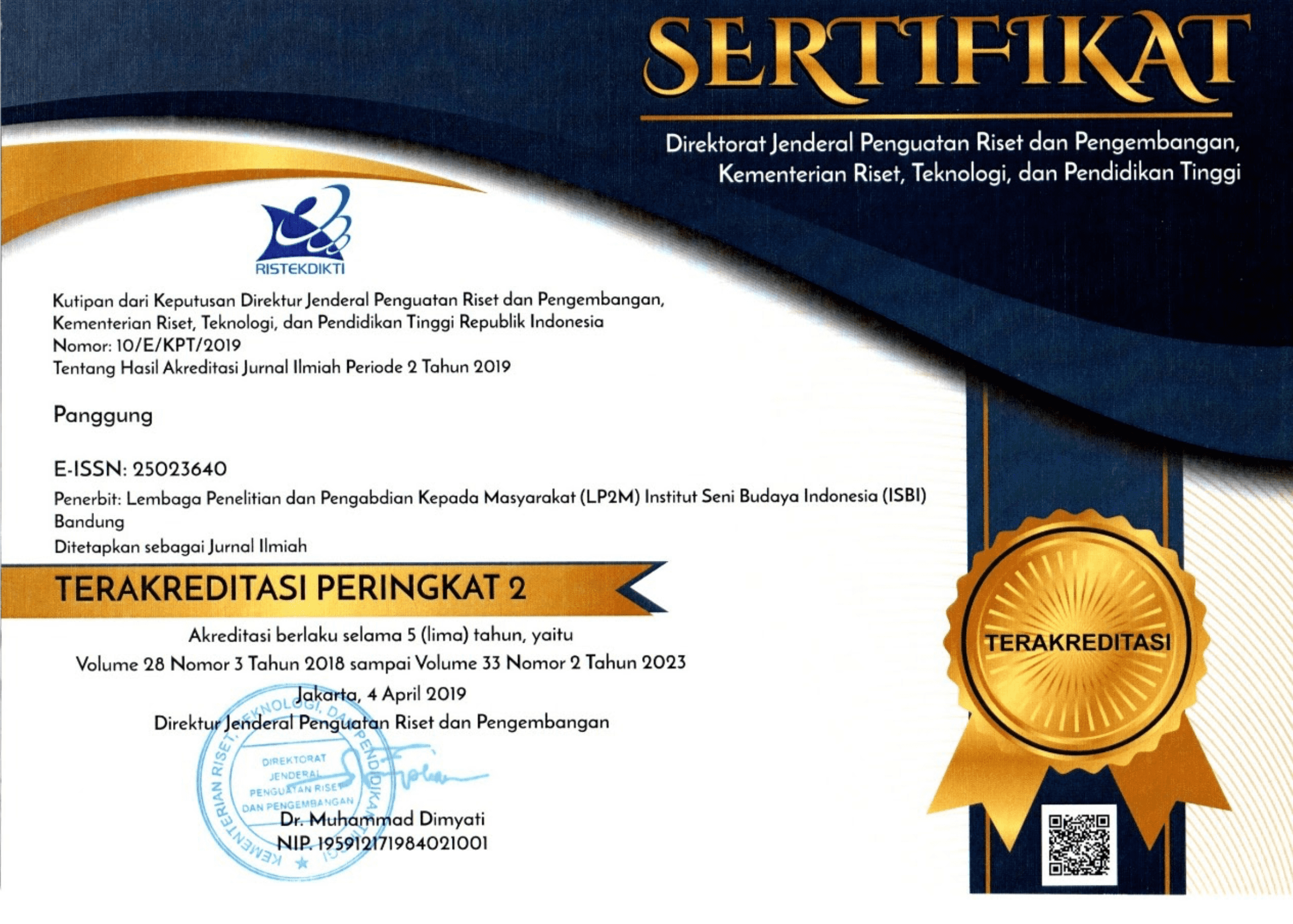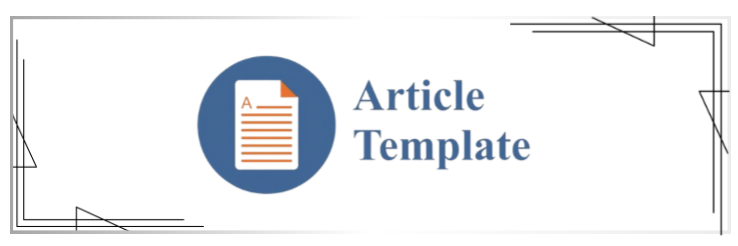Author Guidelines
Author Guidelines
Papers submitted for publication must conform to the following guidelines:
- The article submitted should be based on research--be it library or fieldwork or other kinds of researches in the last two years, discuss the themes arts and their cultural contexts, and have not been previously published;
- Papers should write in Bahasa Indonesia or English, minimum 6000 words, must be typed in one-half spaced on A4-paper size, using palatino linotype font 11 for contents and font 22 for titles and sub-titles;
- Writing guidelines:When a source is cited for the first time, full information is provided: full name(s) of author(s), title of the source in italic, place of publication, publishing company, date of publication, and the precise page that is cited. For the following citations of the same source, list the author’s last name, two or three words of the title, and the specific page number(s). Bibliographical reference must be noted in footnote and bibliography according to APA 6th edition.
- The title no more than 12 words
- Full name(s) of the author(s) must be stated, along with his/her/their institution and complete address, including email and phone number;
- All submission must include a 150-200 word abstract (in English and Indonesia);
- Structure of the papers consist of Introduction; Result and Discussion; Conclusion; and Bibliography.
- All submission should be in OpenOffice, Microsoft Word, RTF, or WordPerfect document file format;
- The article should present bibliography which entails primary sources--books, journals, manuscripts, and others --and updated secondary sources from books or peer reviewed journals
- The style and format, including the structure of article, footnotes, bibliography, should follow JurnalPanggung template.
Example of Bibliography:
Hadi, Y. S. (2017). The Legitimacy of Classical Dance GagragNgayogyakarta.Panggung, 27 (4), 388–397.
Buku
Becker, J. (2004). Deep Listeners: Music, Emotion, and Trancing. Bloomington: Indiana University Press.
BukuTerjemahan:
Hawkins, Alma M. (1991). Moving From Within: A New Method for Dance Making. Diterjemahkanoleh. I. WayanDibia. 2003. BergerakMenurutHati. Jakarta: Ford Fondationdan MSPI.
BungaRampai
Berg, B. (2011). "Authentic" Islamic Sounds?OrkesGambus Music, the Arab Idiom, and Sonic Symbols in Indonesia Islamic Musical Arts. In D. D. Harnish, Rasmussen, Anne K. (Ed.), Divine Inspirations Music and Islam in Indonesia. Oxford, New York: Oxford University Press.
Skripsi, Thesis, Disertasi, danLaporanPenelitian
Clair, K. S. (2012). The Art of Resistance: Trauma, Gender, and Traditional Performance in Acehnese Communities, 1976--2011. (Ph.D), University of California, United States, California.
Audio/Video
Sugito, H. (2005). Lakon Semar Gugat. Yogyakarta: Fajar Record.
PustakaLaman
Wohlstetter, P. 2010. Organizing for Successful School-Based Management. Retrieved February 5, 2014, from http://www.ascd.org/readingroom/books/wohlstetter9 books.html
Webiste/laman:
Mengenal Arsitektur dan Filosofi Rumah Baduy. Retrieved January 15, 2017, from https://rumahulin.com/rumah-adat-baduy/




